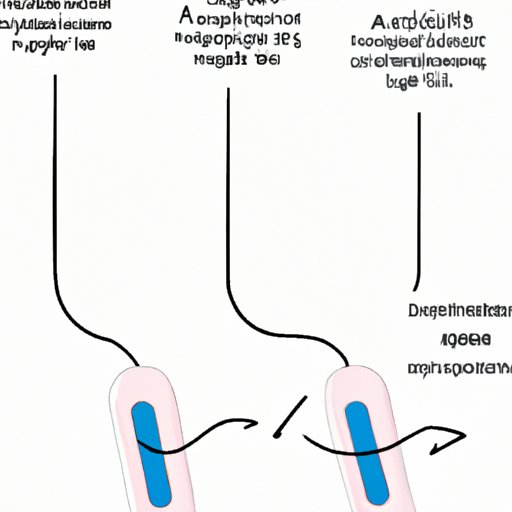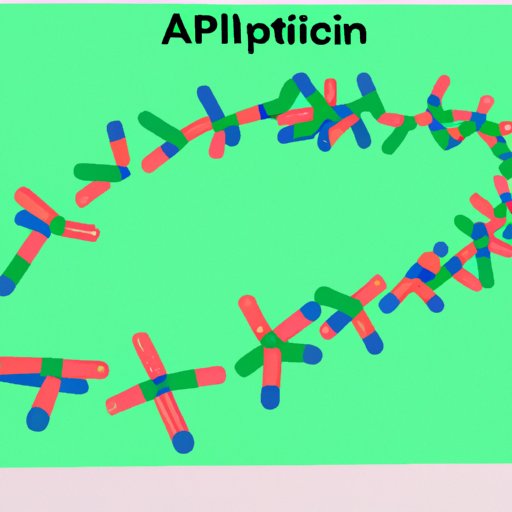Introduction
Ampicillin is a type of antibiotic used to treat bacterial infections. It belongs to a class of drugs known as “penicillins”, which are derived from the fungus Penicillium chrysogenum. These drugs are effective at killing certain types of bacteria, such as Escherichia coli (E. coli), Salmonella, and Shigella. Ampicillin is effective against both Gram-positive and Gram-negative bacteria, making it a broad-spectrum antibiotic.
This article will explore the mechanism of action of ampicillin in more detail. We will look at how antibiotics like ampicillin work to fight bacterial infections, the specificity of ampicillin for bacterial cell walls, the origin of penicillins, different types of penicillin drugs, and the process of inhibition by ampicillin.

Exploring the Mechanism of Action of Ampicillin
Antibiotics such as ampicillin work by targeting specific parts of bacterial cells. They disrupt the normal functioning of these cells, which can lead to their death. In the case of ampicillin, it targets the cell wall of Gram-positive and Gram-negative bacteria. The cell wall is an important structure that provides strength and rigidity to the cell. Without it, the cell would not be able to survive.
Ampicillin works by binding to the enzymes in the cell wall called penicillin-binding proteins (PBPs). These enzymes are responsible for building the peptidoglycan layer of the cell wall. When ampicillin binds to these enzymes, it prevents them from working properly. This results in a weakened cell wall, which makes the bacteria susceptible to other antibiotics or the body’s own immune system.
A Primer on Penicillin and Its Derivatives, Including Ampicillin
Penicillin was discovered in 1928 by Alexander Fleming, who noticed that colonies of Staphylococcus aureus were inhibited by a mold that had grown on his laboratory culture plates. He identified the active ingredient as penicillin, which is a natural product produced by the fungus Penicillium chrysogenum. Since then, a number of different derivatives of penicillin have been developed, including ampicillin.
Ampicillin is a semi-synthetic derivative of penicillin. It is similar to penicillin but has a slightly broader spectrum of activity. It is effective against both Gram-positive and Gram-negative bacteria, making it a broad-spectrum antibiotic. Other derivatives of penicillin include amoxicillin, oxacillin, and nafcillin.
Understanding How Ampicillin Works Against Bacteria
Ampicillin works by inhibiting the growth of bacteria and preventing them from reproducing. It does this by binding to the enzymes in the cell wall called penicillin-binding proteins (PBPs). These enzymes are responsible for building the peptidoglycan layer of the cell wall. When ampicillin binds to these enzymes, it prevents them from working properly. This results in a weakened cell wall, which makes the bacteria susceptible to other antibiotics or the body’s own immune system.
Ampicillin is effective against a wide range of bacteria, including E. coli, Salmonella, and Shigella. However, it is not effective against all types of bacteria. For example, it is not effective against Pseudomonas aeruginosa, a type of bacterium found in the lungs of people with cystic fibrosis.
Conclusion
In conclusion, ampicillin is an antibiotic used to treat bacterial infections. It works by binding to the enzymes in the cell wall called penicillin-binding proteins (PBPs). This prevents them from working properly, resulting in a weakened cell wall that makes the bacteria susceptible to other antibiotics or the body’s own immune system. Ampicillin is effective against a wide range of bacteria, including E. coli, Salmonella, and Shigella.
The use of ampicillin for treating bacterial infections has many benefits. It is relatively safe and has few side effects. It is also effective against both Gram-positive and Gram-negative bacteria, making it a broad-spectrum antibiotic. Additionally, it has a low cost and is readily available.
Overall, ampicillin is a powerful and versatile antibiotic that can be used to effectively treat many types of bacterial infections.
(Note: Is this article not meeting your expectations? Do you have knowledge or insights to share? Unlock new opportunities and expand your reach by joining our authors team. Click Registration to join us and share your expertise with our readers.)
